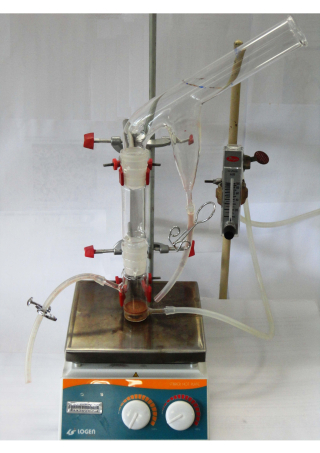Min E
- Minor triad (minor chords) with scale degrees 1 b3 5 Diminished triads (diminished chords) with scale degrees 1 b3 b5 Now let’s calculate the quality of each chord in the key of E.
- 10 Minute Mail Free Temporary Email. Why would you use this? Maybe you want to sign up for a site which requires that you provide an e-mail address to send validation e-mail to.
- E minor is a minor scale based on E, consisting of the pitches E, F ♯, G, A, B, C, and D. Its key signature has one sharp. Its relative major is G major and its parallel major is E major. The E natural minor scale is.
Mine definition is - my —used before a word beginning with a vowel or h or sometimes as a modifier of a preceding noun—archaic except in an elevated style. How to use mine in a sentence.

The metabolic equivalent of task (MET) is the objective measure of the ratio of the rate at which a person expends energy, relative to the mass of that person, while performing some specific physical activity compared to a reference, set by convention at 3.5 mL of oxygen per kilogram per minute, which is roughly equivalent to the energy expended when sitting quietly.
Quantitative definitions[edit]
Based on oxygen utilization and body mass[edit]
The original definition of metabolic equivalent of task is the oxygen used by a person in milliliters per minute per kilogram body mass divided by 3.5.
Other definitions which roughly produce the same numbers have been devised, such as: Word for mac changes list bullets to squares.
where

- kcal = kilocalorie
- kg = kilogram
- h = hour
- kJ = kilojoule
- W = watt
Based on watts produced and body surface area[edit]
Still another definition is based on the body surface area, BSA, and energy itself, where the BSA is expressed in m2:
which is equal to the rate of energy produced per unit surface area of an average person seated at rest. The BSA of an average person is 1.8 m2 (19 ft2). Metabolic rate is usually expressed in terms of unit area of the total body surface (ANSI/ASHRAE Standard 55[1]).
Based on resting metabolic rate[edit]
Originally, 1 MET was considered as the resting metabolic rate (RMR) obtained during quiet sitting.[2][3]
Although the RMR of any person may deviate from the reference value, MET can be thought of as an index of the intensity of activities: for example, an activity with a MET value of 2, such as walking at a slow pace (e.g., 3 km/h) would require twice the energy that an average person consumes at rest (e.g., sitting quietly).[4][5]
Use[edit]
MET: The ratio of the work metabolic rate to the resting metabolic rate. ⁽1337x⁾ the rental (2020) full movie 123movies. One MET is defined as 1 kcal/kg/hour and is roughly equivalent to the energy cost of sitting quietly. A MET also is defined as oxygen uptake in ml/kg/min with one MET equal to the oxygen cost of sitting quietly, equivalent to 3.5 ml/kg/min. The MET concept was primarily designed to be used in epidemiological surveys, where survey respondents answer the amount of time they spend for specific physical activities.[3]MET is used to provide general medical thresholds and guidelines to a population.[6][7] A MET is the ratio of the rate of energy expended during an activity to the rate of energy expended at rest. For example, 1 MET is the rate of energy expenditure while at rest. A 4 MET activity expends 4 times the energy used by the body at rest. If a person does a 4 MET activity for 30 minutes, he or she has done 4 x 30 = 120 MET-minutes (or 2.0 MET-hours) of physical activity. A person could also achieve 120 MET-minutes by doing an 8 MET activity for 15 minutes.[8]
In a systematic review of physical activity and major chronic diseases, a meta‐analysis of 11.25 MET h/week increase in physical activity yielded: 23% lower risk of cardiovascular disease mortality (RR=0.77, 95% Confidence interval 0.71-0.84), and 26% lower risk of type 2 diabetes (0.74 RR, 95% CI, 0.72-0.77).[9]
Exercise guidelines[edit]
Min E
The American College of Sports Medicine and American Heart Association guidelines count periods of at least 10 minutes of moderate MET level activity towards their recommended daily amounts of exercise. For healthy adults aged 18 to 65, the guidelines recommend moderate exercise for 30 minutes five days a week, or vigorous aerobic exercise for 20 minutes three days a week.[10]

Activities[edit]
| Physical activity | MET |
|---|---|
| Light intensity activities | < 3 |
| writing, desk work, using computer | 1.5[10] |
| walking slowly | 2.0[10] |
| Moderate intensity activities | 3 to 6 |
| walking, 3.0 mph (4.8 km/h) | 3.0[10] |
| sweeping or mopping floors, vacuuming carpets | 3 to 3.5[10] |
| yoga session with asanas and pranayama | 3.3[11] |
| Tennis doubles | 5.0[10] |
| sexual activity, aged 22 | 5.8[12] |
| Vigorous intensity activities | ≥6 |
| aerobic dancing, medium effort | 6.0[13] |
| bicycling, on flat, 10–12 mph (16–19 km/h), light effort | 6.0[10] |
| jumping jacks | >6.0[14] |
| sun salutation (Surya Namaskar, vigorous with transition jumps) | 7.4[11] |
| basketball game | 8.0[10] |
| swimming moderately to hard | 8 to 11[10] |
| jogging, 5.6 mph (9.0 km/h) | 8.8[13] |
| rope jumping (66/min) | 9.8[13] |
| rope jumping (84/min) | 10.5[13] |
| rope jumping (100/min) | 11.0[13] |
| jogging, 6.8 mph (10.9 km/h) | 11.2[13] |
Limitations[edit]
Min Egyptian God
The definition of MET is problematic when used for specific persons.[4][5] By convention, 1 MET is considered equivalent to the consumption of 3.5 ml O2·kg−1·min−1 (or 3.5 ml of oxygen per kilogram of body mass per minute) and is roughly equivalent to the expenditure of 1 kcal per kilogram of body weight per hour. This value was first experimentally derived from the resting oxygen consumption of a particular subject (a healthy 40-year-old, 70 kg man) and must therefore be treated as a convention. Since the RMR of a person depends mainly on lean body mass (and not total weight) and other physiological factors such as health status, age, etc., actual RMR (and thus 1-MET energy equivalents) may vary significantly from the kcal/(kg·h) rule of thumb. RMR measurements by calorimetry in medical surveys have shown that the conventional 1-MET value overestimates the actual resting O2 consumption and energy expenditures by about 20% to 30% on the average, whereas body composition (ratio of body fat to lean body mass) accounted for most of the variance.[4][5]
Standardized definition for research[edit]
Minecraft.net
The Compendium of Physical Activities was developed for use in epidemiologic studies to standardize the assignment of MET intensities in physical activity questionnaires. Dr. Bill Haskell from Stanford University conceptualized the compendium and developed a prototype for the document. The compendium was used first in the Survey of Activity, Fitness, and Exercise (SAFE study – 1987 to 1989) to code and score physical activity records. Since then, the compendium has been used in studies worldwide to assign intensity units to physical activity questionnaires and to develop innovative ways to assess energy expenditure in physical activity studies. The compendium was published in 1993 and updated in 2000 and 2011.[15][16]
Minecraft Classic
See also[edit]
References[edit]
E Minor Guitar
- ^ANSI/ASHRAE Standard 55, Thermal Environmental Conditions for Human Occupancy
- ^Ainsworth et al. 1993
- ^ abAinsworth et al. 2000
- ^ abcByrne et al. 2005
- ^ abcSavage, Toth & Ades 2007
- ^Royall et al. 2008
- ^World Health Organization 2010[page needed]
- ^'Appendix 1 – 2008 Physical Activity Guidelines – health.gov'.
- ^Wahid, A.; Manek, N.; Nichols, M.; Kelly, P.; Foster, C.; Webster, P.; Kaur, A.; Friedemann Smith, C.; Wilkins, E.; Rayner, M.; Roberts, N.; Scarborough, P. (2016). 'Quantifying the Association Between Physical Activity and Cardiovascular Disease and Diabetes: A Systematic Review and Meta‐Analysis'. Journal of the American Heart Association. 5 (9): e002495. doi:10.1161/JAHA.115.002495. PMC5079002. PMID27628572.
- ^ abcdefghiHaskell, William L.; et al. (2007). 'Physical Activity and Public Health'. Circulation. 116 (9): 1081–1093. doi:10.1161/CIRCULATIONAHA.107.185649. ISSN0009-7322. The guidelines are free to download.
- ^ abLarson-Meyer, D. Enette (2016). 'A Systematic Review of the Energy Cost and Metabolic Intensity of Yoga'. Medicine & Science in Sports & Exercise. 48 (8): 1558–1569. doi:10.1249/MSS.0000000000000922. ISSN0195-9131. The review examined 17 studies, of which 10 measured the energy cost of yoga sessions.
- ^Frappier et al. 2013
- ^ abcdefJetté, M.; Sidney, K.; Blümchen, G. (1990). 'Metabolic Equivalents (METS) in Exercise Testing, Exercise Prescription, and Evaluation of Functional Capacity'. Clinical Cardiology. 13 (8): 555–565. doi:10.1002/clc.4960130809. PMID2204507.
- ^'General Physical Activities Defined by Level of Intensity'(PDF). cdc.gov. CDC. Retrieved February 7, 2020.
- ^Ainsworth et al. 2011
- ^'Compendia – Compendium of Physical Activities'. Compendium of Physical Activities on Google Sites. Retrieved 26 May 2018. Web site with links to the Compendia

Sources[edit]
- Ainsworth, Barbara E.; Haskell, William L.; Herrmann, Stephen D.; Meckes, Nathanael; Bassett, David R.; Tudor-Locke, Catrine; Greer, Jennifer L.; Vezina, Jesse; Whitt-Glover, Melicia C.; Leon, Arthur S. (2011). '2011 Compendium of Physical Activities'. Medicine & Science in Sports & Exercise. 43 (8): 1575–81. doi:10.1249/mss.0b013e31821ece12. PMID21681120.
- Ainsworth, Barbara E.; Haskell, William L.; Leon, Arthur S.; Jacobs, David R.; Montoye, Henry J.; Sallis, James F.; Paffenbarger, Ralph S. (1993). 'Compendium of Physical Activities: Classification of energy costs of human physical activities'. Medicine & Science in Sports & Exercise. 25 (1): 71–80. doi:10.1249/00005768-199301000-00011. PMID8292105.
- Ainsworth, Barbara E.; Haskell, William L.; Whitt, Melicia C.; Irwin, Melinda L.; Swartz, Ann M.; Strath, Scott J.; O'Brien, William L.; Bassett, David R.; Schmitz, Kathryn H.; Emplaincourt, Patricia O.; Jacobs, David R.; Leon, Arthur S. (2000). 'Compendium of Physical Activities: An update of activity codes and MET intensities'. Medicine & Science in Sports & Exercise. 32 (9 Suppl): S498–504. CiteSeerX10.1.1.524.3133. doi:10.1097/00005768-200009001-00009. PMID10993420.
- Byrne, Nuala M.; Hills, Andrew P.; Hunter, Gary R.; Weinsier, Roland L.; Schutz, Yves (2005). 'Metabolic equivalent: One size does not fit all'. Journal of Applied Physiology. 99 (3): 1112–9. CiteSeerX10.1.1.494.7568. doi:10.1152/japplphysiol.00023.2004. PMID15831804.
- Royall, Penelope Slade; Troiano, Richard P.; Johnson, Melissa A.; Kohl, Harold W.; Fulton, Janet E. (2008). 'Appendix 1. Translating Scientific Evidence About Total Amount and Intensity of Physical Activity Into Guidelines'. 2008 Physical Activity Guidelines for Americans. United States Department of Health and Human Services. pp. 54–7.
- Manore, Melinda; Thompson, Janice (2000). Sport Nutrition for Health and Performance. Human Kinetics. ISBN978-0-87322-939-5.
- Savage, Patrick D.; Toth, Michael J.; Ades, Philip A. (2007). 'A Re-examination of the Metabolic Equivalent Concept in Individuals With Coronary Heart Disease'. Journal of Cardiopulmonary Rehabilitation and Prevention. 27 (3): 143–8. doi:10.1097/01.HCR.0000270693.16882.d9. PMID17558194.
- Sotile, Wayne M.; Cantor-Cooke, R. (2003). Thriving with Heart Disease: A Unique Program for You and Your Family. pp. 161–2. ISBN978-0-7432-4364-3.
- World Health Organization (2010). Global Recommendations on Physical Activity for Health. World Health Organization. ISBN978-92-4-159997-9.
- Frappier, J.; Toupin, I.; Levy, J.J.; Aubertin-Leheudre, M.; Karelis, A.D. (2013). 'Energy Expenditure during Sexual Activity in Young Healthy Couples'. PLoS ONE. 8 (10): e79342. doi:10.1371/journal.pone.0079342. PMC3812004. PMID24205382.
External links[edit]
